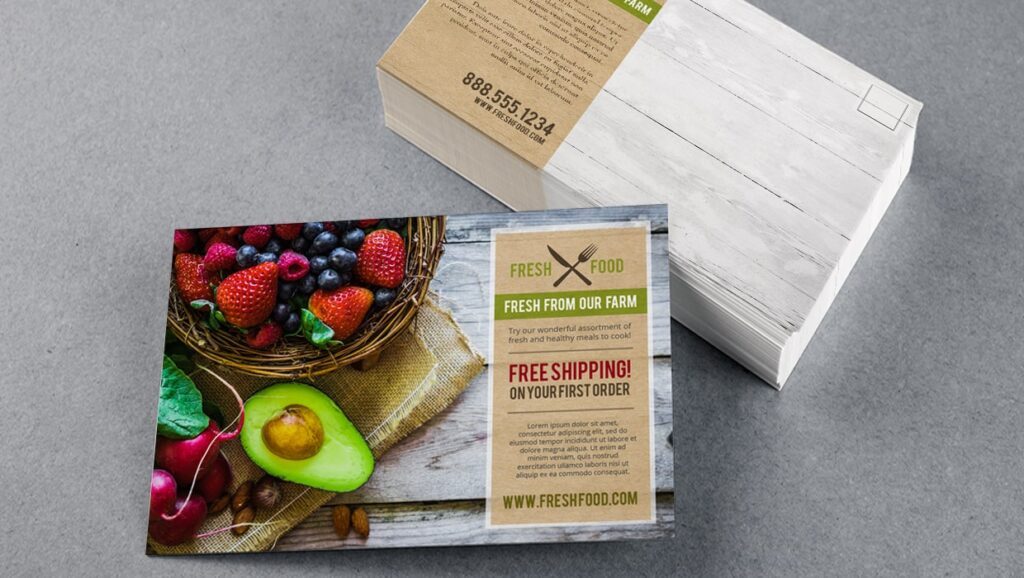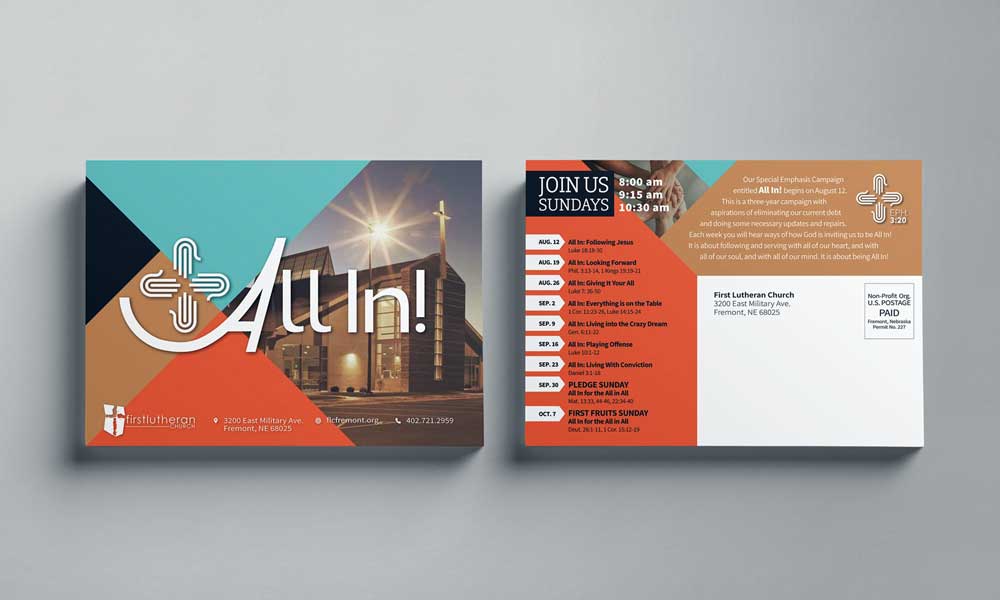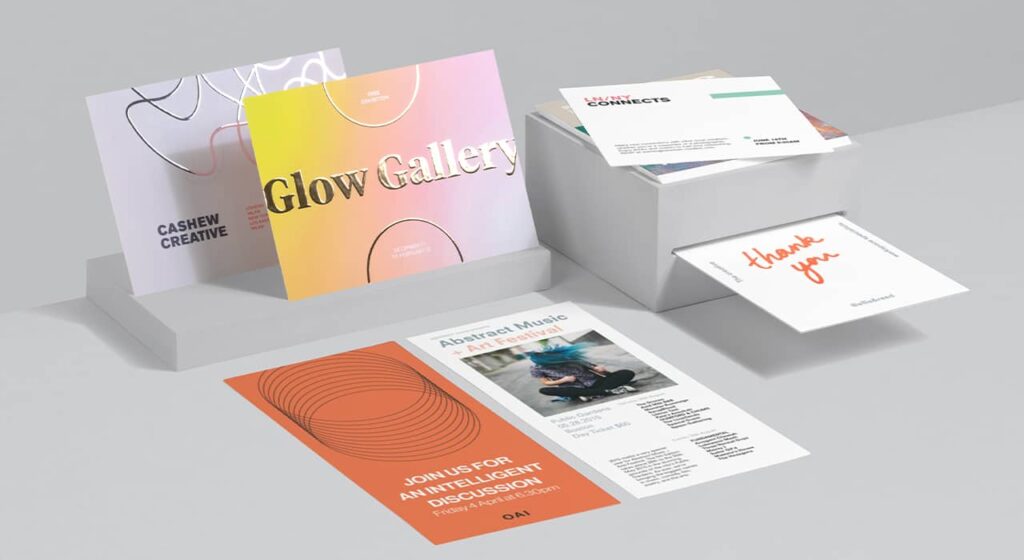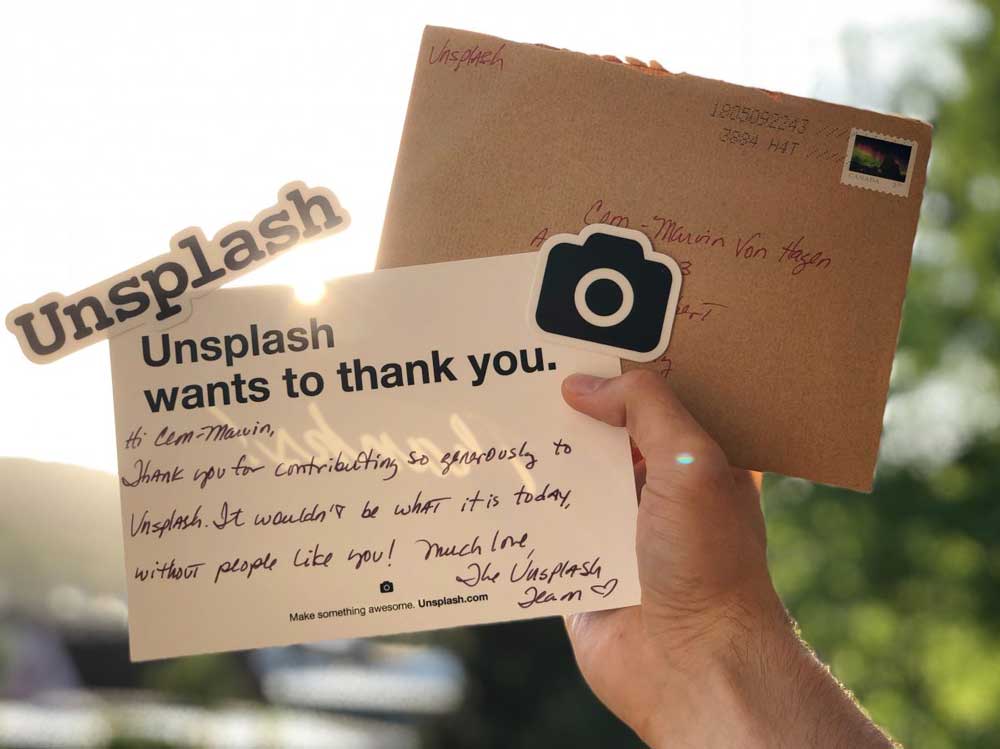How Postcard Marketing Can Help Your Brand
Direct mail is one of the most compelling and cost-efficient ways to reach potential customers.
But what if another option could be mailed directly to consumers at no extra charge? What if you could cut down on printing costs while increasing response rates? And perhaps even better, what if this method didn’t involve writing anything yourself?
That would all sound good, right? Thanks to technological advancements over the past decade or so, we now have such options as “postcard marketing.” Let’s look at precisely what these are, why people love them, and how you can use them in your business today.
Table of Contents
What Is Postcard Marketing?

In short, postcard marketing sends direct advertising via postal service (i.e., snail mail). Many argue that postcards still produce higher ROI than other forms of digital media like email marketing because they deliver results much faster.
They’re often used as wedding invitations, holiday greetings from businesses and organisations, political campaign reminders, and advertisements intended to attract new clients.
And since they don’t require fancy web design skills, anyone with basic Photoshop or Illustrator knowledge can whip something together in minutes.
So why isn’t everyone already running around town buying stacks of postcards, stuffing them into envelopes and dropping them off at local shops?
Simple: They come with several downsides.
For starters, postcards are challenging to personalise compared to flyers and brochures. They need to be designed specifically for each recipient instead of generic. This makes producing physical copies rather pricey, especially when dealing with high-volume orders.
Furthermore, postcards are considered junk mail by many governments worldwide, which means companies must adhere to strict guidelines regarding quantity and frequency before sending them out. The result? A lot of unopened letters went straight into the garbage bin.
However, despite those challenges, postcards are undeniably popular among marketers. Why? Because they tend to grab attention quickly. Unlike letters and calling cards that may not immediately catch someone’s eye, postcards are meant to draw immediate reactions.
With that said, let’s explore different methods of implementing postcard marketing within various industries.
How to Start with Postcard Marketing
1 – Design Your Postcards
Designing custom postcards might be the perfect solution if you want to save money without sacrificing quality.
After all, if you’ve been putting together flyers or other print materials for years, wouldn’t it feel amazing knowing that your next order won’t consist of hundreds of sheets of paper ripped apart for glue stick residue later?
Consider which industry you’d like to target with your postcards. Then, search online for templates that fit the bill.
You’ll find plenty of sites offering premade designs for both general promotional purposes and niche campaigns. Once you’ve settled on a template, customise it however you see fit.
You can add colours, change fonts, swap pictures, etc. Whatever works best for you.
Remember: If you plan on creating multiple cards, remember that larger formats mean higher production costs. So, try to limit your card sizes accordingly.
When done, download the final product onto your computer and upload it to a reputable cloud storage provider like Google Drive or Dropbox. Now, head over to your printer company of choice and ask them to prepare a proof sheet. From here, you’ll receive a hard copy of everything ready for pickup or delivery.
2 – Use Mail Merge Services for Printed Postcards
Mail merge refers to any process where data is entered manually into preprinted documents based on specific criteria. For example, say you own a small manufacturing company. To promote its latest product line, you create a flyer that includes personalised messages addressed to every customer.
The problem is that you only sell three types of products: red, blue, and green. However, you know that your client base contains John Smith, Jane Doe, and Sam Goody. How do you include names like these in your document without rewriting everything yourself?
Well, there’s a simple trick: Use mail merge! That’s right; you can enter information into prewritten documents using specialised software and apps. When finished, your printed material looks identical to handwritten signatures. All you have to do afterwards is choose the appropriate font depending on the type of message and size you want to convey.
This method isn’t limited to mass communications either. Plenty of folks are willing to help you craft unique greeting cards for birthdays, holidays, anniversaries, graduations, baby showers, weddings, and funerals. Plus, you never have to worry about wasting ink again!
3 – Use an Online Platform to Send Postcards

As mentioned earlier, crafting postcards can sometimes prove costly due to their unique nature. Luckily, technology provides us with several solutions to offset this issue. One such solution is through websites that allow users to create their postcards.
These platforms usually feature tools similar to Adobe Acrobat Pro, allowing users to insert customised elements like logos, headers, buttons, images, and more. On top of that, you can easily adjust layouts to suit your needs. Some examples of these programs include Zazzle, Etsy, and Canva.
Most importantly, once you complete the project, you can share it publicly on social networks like Facebook, Twitter, LinkedIn, Pinterest, Reddit, Instagram, Tumblr, YouTube, Snapchat, TikTok, and others. Alternatively, you can store your creation privately within the platform itself.
Many sites also provide analytics features that track impressions, clicks, likes, shares, comments, views, and visits. These metrics can give you insight into how well your postcard marketing efforts performed.
Lastly, you can always leverage the power of automation whenever possible. Instead of spending countless hours creating postcards from scratch, consider automating the entire workflow by uploading files to third-party providers like Zapier and IFTTT.
4 – Be Creative With Your Content
While postcard marketing doesn’t necessarily demand creativity, it does encourage you to stay true to your Brand while trying to stand out amongst competitors. As such, you should avoid falling victim to common mistakes amateur advertisers make.
Here are some things to watch out for:
Don’t write too long sentences. People generally skim over lengthy texts, making shorter phrases more manageable to read. Keep paragraphs short yet thorough enough to grasp the point you intend to express fully.
Avoid cliches and jargon. Refrain from cramming words like “best” and “ultimate” into descriptions or headlines unless necessary. Also, avoid saying something like, “We are excited to announce our newest collection,” unless it genuinely applies.
Use visuals whenever possible. There is nothing like incorporating charts, graphs, maps, videos, and other visual data representations that screams professionalism. Are you not convinced? Check out the following infographic created by Forbes magazine. It uses nothing but postcards to explain complex topics clearly and succinctly.
Be mindful of grammar and punctuation. Errors in spelling and grammatical usage are surefire ways to lose credibility. Don’t forget to double-check for typos beforehand. Do not assume readers understand terms like “proprietary”, “unique”, “industry-leading”, “state of the art”, or “newest release”. These expressions often don’t carry the same meaning in everyday speech.
Stay away from clichés. Avoid repeating tired adages like “winning team,” “go big or go home,” “we are proud to serve you,” and “today’s deals cannot last forever.”
Make sure your content stands the test of time. New products and technologies emerge daily, leaving little room for outdated ideas. Moreover, staying relevant gives visitors confidence in your ability to adapt to changes.
5 – Include Social Media on Your Digital Postcards

Social media integration allows you to further engage audience members beyond what your postcard offers. By integrating links to social profiles on your postcards, you can drive traffic back to your website, landing page, blog, or anywhere else you wish.
Depending on the device used, these buttons can appear in different places, including above the fold, below the fold, sidebar, footer, header, and bottom corners.
Typically, adding social handles to digital postcards helps increase clickthrough, engagement, and conversion rates. Once inserted, visitors can instantly connect to your account for additional details, updates, news, promotions, and more.
What are the Benefits of a Postcard Marketing Strategy
We often receive hundreds of emails daily – most of which go straight into our junk mail folders without being opened. But if you think back over all the times you’ve received promotional offers by email, chances are you’ll be able to remember at least one occasion when someone sent you an offer via snail mail instead.
How much more likely is it that you’ll open and read something mailed to you rather than delete it as spam? Postcards make excellent direct mail pieces because people immediately pay attention to them.
The best part about postcards is that, unlike other forms of advertising such as letters, flyers, fliers, catalogues, brochures, etc., customers won’t throw them directly into the trash once they arrive in the mailbox.
It takes too long to organise everything before recycling, and some items go unread anyway. Most people take time to sort through their daily garbage after receiving unsolicited communications, but postcards generally get handled sooner.
Another benefit of postcards for businesses is their low cost compared to traditional print media like newspapers, magazines, billboards, radio, TV, and direct mail.
You can buy large quantities of high-quality cards very inexpensively online. Depending upon your target audience, postcard printing costs can range from $0.05 per card to several dollars per card.
Not only do postcards provide better returns on investment, but they also allow small businesses to compete against larger companies since they typically have lower prices due to economies of scale.
How Can I Use Postcards In My Business?

You must understand your customer base to determine how you should position yourself using postcards.
- What types of services/products do you sell?
- Where does your ideal client live?
- Do you cater primarily to residents or commercial?
- Are you targeting professionals or amateurs?
Then it would help if you decided whether you want to focus on getting prospects’ names and contact information or trying to convince them to purchase your product or service outright.
The two strategies work well together, however. Here are four ways postcards can enhance your current efforts:
1 – Giveaways
Send a postcard offering freebies now and then to remind past clients to call you. This works exceptionally well for dentists, doctors, realtors, attorneys, mortgage brokers, insurance agents, accountants, coaches, consultants, interior designers, and anyone selling products or services. Just give visitors a reason to return to your site repeatedly.
2 – Discounts
Give potential new clients a discount coupon for your top-selling item(s) and include directions to your offices. For example, if you own a retail clothing store, give your customers 20% off coupons at your flagship location during certain seasons.
Or maybe you run a bed & breakfast inn specialising in romantic weekends away. Offer guests 10% off their room rates plus dinner reservations at your restaurant when they book three nights or more.
Make sure to include clear instructions regarding expiration dates. You could also try giving discounts on group orders of six bottles or more, spa packages, and golf outings.
3 – Newsletters
Create a “special” newsletter issue highlighting tips and tricks related to the type of goods and services you sell. Your subscribers will appreciate learning more about your industry and feel valued as repeat buyers.
Subscribers may even spread the word about your newsletters among their colleagues. Donate a portion of profits from each sale made within your company to charity.
4 – Learn More
Include relevant links inside your postcards so readers can learn more about your offerings. For instance, if you operate a health club, link prospective patrons to articles and videos on your website about exercise routines for different age groups.
Also, consider linking to pages on your blog, Facebook page, LinkedIn profile, Twitter feed, YouTube channel, Instagram feed, Pinterest boards, and any other social networking sites you belong to or manage.
Think creatively about how to tie promotions and specials to events around town. Letting your followers know beforehand makes them anticipate newsworthy announcements and encourages them to check your messages later.
Other Ways To Get More From Your Postcards

If you follow the steps above closely, you’ll soon realise that postcards aren’t limited to simple invitations to visit your website or opt-in boxes anymore.
With a bit of creativity and imagination, postcards become potent tools for promoting your Brand and building relationships with existing and future customers.
Now that we’ve covered how postcards can boost your bottom line, here are five additional ideas for making the most of them:
1 – Personalised Postcards
Personalise postcards with your logo or signature design element. People respond strongly to anything branded, and adding your logo to postcards helps reinforce your identity throughout the process. A consistent look across multiple channels builds trust and loyalty.
2 – Use QR Codes
Incorporate QR codes into postcards that lead to websites, blogs, video demos, white papers, case studies, FAQs, podcasts, and eBooks. These handy devices can increase conversions simply by providing easy access to helpful resources.
3 – Display them publicly
Set aside dedicated spaces in your workplace for displaying postcards. Place them strategically near water fountains, break rooms, conference rooms, bathrooms, reception desks, gift shops, cafeterias, parking lots, vending machines, and restrooms.
When you place postcards everywhere you possibly can, you create a sense of familiarity and comfort that enhances the overall experience.
4 – Contact details
Put your name and contact info at the front and centre. Include your complete address, telephone numbers, faxes, email addresses, web URLs, mailing addresses, and mobile numbers.
Be sure to add a physical postal code to avoid confusion. Some experts recommend placing the street sign icon below your main image.
Remember that postcards are still influential despite the rise of digital mediums, such as text messaging, instant messengers, voice mails, Skype calls, electronic bills, e-newsletters, and personal computers.
In fact, according to recent statistics published by Kelsey Group, 73 per cent of consumers prefer speaking to salespeople over texts, IMs, voicemails, and emails.
By incorporating postcards into your marketing strategy, you can reach customers wherever they happen to be looking for your particular niche.
Plus, postcards continue to hold a substantial value in terms of ROI. According to the Direct Marketing Association, Americans spent nearly $1 trillion in 2020 alone on consumer packaged goods, travel, entertainment, education, transportation, healthcare, and telecommunication industries.
